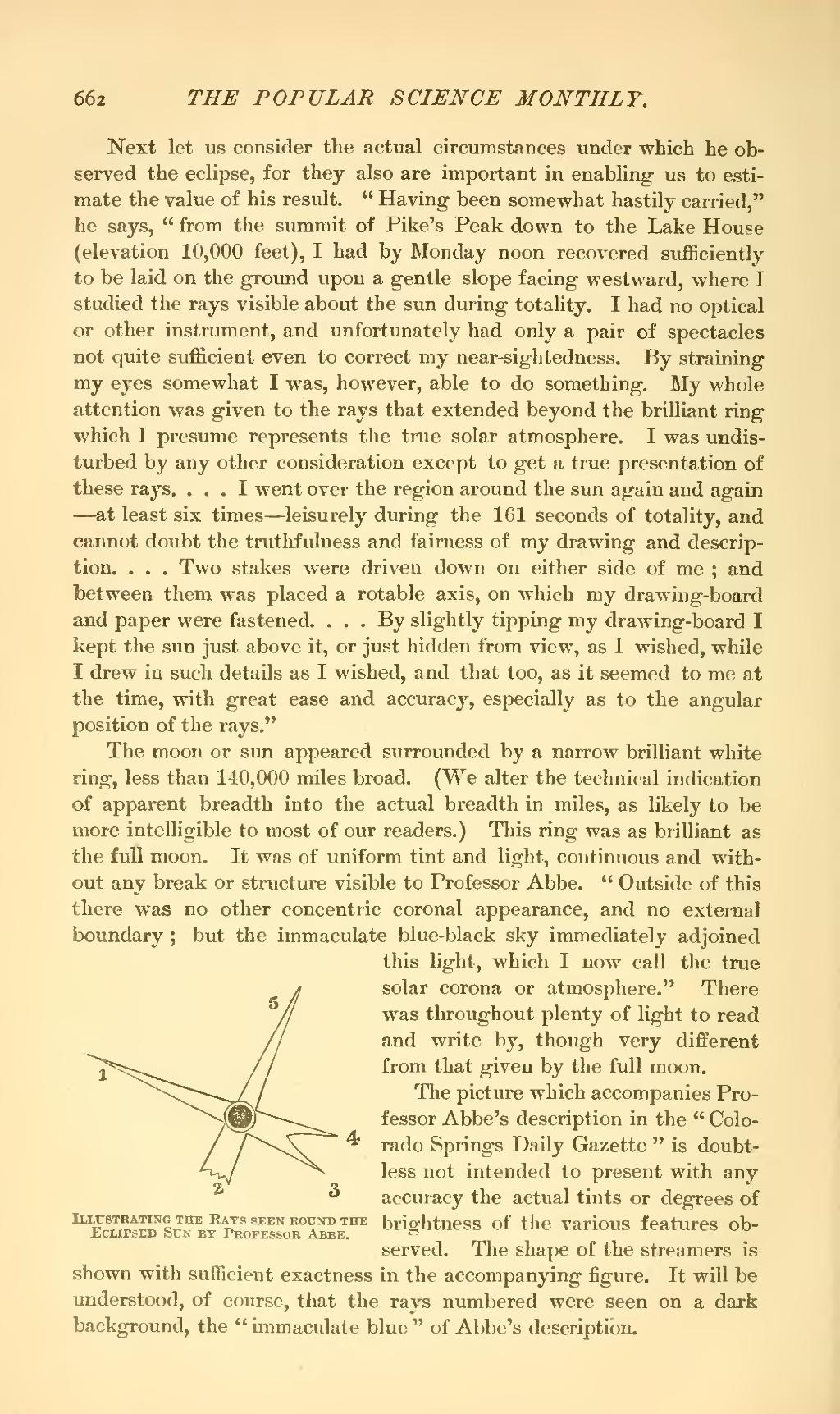Next let us consider the actual circumstances under which he observed the eclipse, for they also are important in enabling us to estimate the value of his result. "Having been somewhat hastily carried," he says, "from the summit of Pike's Peak down to the Lake House (elevation 10,000 feet), I had by Monday noon recovered sufficiently to be laid on the ground upon a gentle slope facing westward, where I studied the rays visible about the sun during totality. I had no optical or other instrument, and unfortunately had only a pair of spectacles not quite sufficient even to correct my near-sightedness. By straining my eyes somewhat I was, however, able to do something. My whole attention was given to the rays that extended beyond the brilliant ring which I presume represents the true solar atmosphere. I was undisturbed by any other consideration except to get a true presentation of these rays. . . . I went over the region around the sun again and again—at least six times—leisurely during the 161 seconds of totality, and cannot doubt the truthfulness and fairness of my drawing and description. . . . Two stakes were driven down on either side of me; and between them was placed a rotable axis, on which my drawing-board and paper were fastened. . . . By slightly tipping my drawing-board I kept the sun just above it, or just hidden from view, as I wished, while I drew in such details as I wished, and that too, as it seemed to me at the time, with great ease and accuracy, especially as to the angular position of the rays."
The moon or sun appeared surrounded by a narrow brilliant white ring, less than 140,000 miles broad. (We alter the technical indication of apparent breadth into the actual breadth in miles, as likely to be more intelligible to most of our readers.) This ring was as brilliant as the full moon. It was of uniform tint and light, continuous and without any break or structure visible to Professor Abbe, "Outside of this there was no other concentric coronal appearance, and no external boundary; but the immaculate blue-black sky immediately adjoined
this light, which I now call the true solar corona or atmosphere." There was throughout plenty of light to read and write by, though very different from that given by the full moon.
The picture which accompanies Professor Abbe's description in the "Colorado Springs Daily Gazette" is doubtless not intended to present with any accuracy the actual tints or degrees of brightness of the various features observed. The shape of the streamers is shown with sufficient exactness in the accompanying figure. It will be understood, of course, that the rays numbered were seen on a dark background, the "immaculate blue" of Abbe's description.


